The Sea is Longing for the Forest: Planting Trees to Protect the Sea
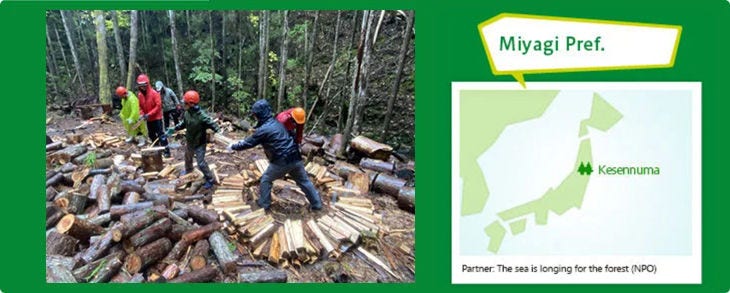
The Sanriku Coast is known as a center for oyster and scallop farming. But did you know that the secret of the sea's bounty lies in its forests? As a matter of fact, rich nutrients from forests are carried to the sea by rivers and other waterways. They are a source of nutrition for oysters and other sea creatures. Along the Sanriku Coast, where you can get a sense of this process firsthand, the COSMO Eco Fund supports activities such as developing forests to nurture a bountiful ocean. We also continue to provide opportunities for people to learn about the connection between forests and the sea through hands-on experiences, thereby expanding the number of people involved in the project.
The C.W. Nicol Afan Woodland and Forest Growing in Higashi Matsushima
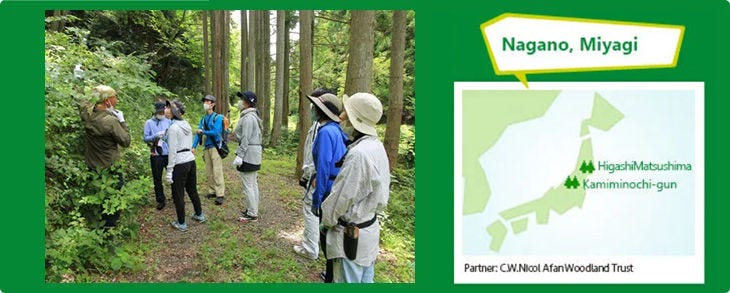
Purchased by C.W. Nicol in 1986 after more than 30 years of neglect and deterioration, the Afan Woodland has been the subject of preservation activities aimed at restoring it to its original glory as a richly biodiverse Japanese forest. The C.W. Afan Woodland Trust now tends to the forest, which had become overgrown with vines and bamboo and was too dark for people to enter, raising seedlings and other plants and planting trees suited to the area. Believing that a bountiful forest –
connected by the circle of life – can heal the mind and body, we invite groups, such as children who have experienced trauma and those with disabilities, to the forest. Here they can enjoy the great outdoors in a way that nurtures their spirit and helps them express themselves. Since the Great East Japan Earthquake in 2011, we have invited people from affected areas to the forest in Higashi Matsushima as part of an earthquake recovery project, offering mental health care for children and adults under stress and restoring forests in those areas.
Protecting and Regenerating the Forests of Mount Fuji, a World Heritage Site
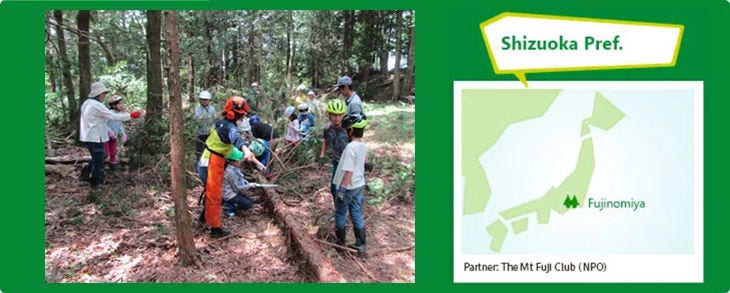
Mount Fuji, which Japan should be proud of in both name and reality, is facing various problems caused by the social activities of humankind. Representative examples include the garbage problem and the increase in invasive alien species.
The COSMO Eco Fund started to support projects to protect, preserve, and improve the environment in FY2016. One such initiative is a project in satoyama (village forests) located close to residential areas, namely the city-owned forest in the Fujinomiya City Kitayama Industrial Park and Awakura Forest. Another example is a project in okuyama (remote forests) situated near virgin forests, namely the government-owned Nishiusuzuka Forest.
Satoyama Preservation by Local Residents in Kamiyama
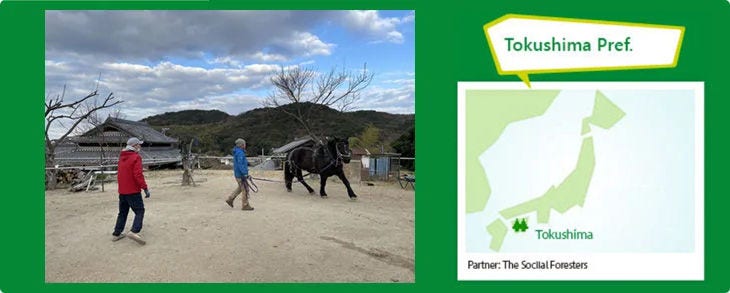
In Kamiyama, Tokushima Prefecture, even coniferous forests close to the town were not well maintained due to the aging of residents and changing lifestyles. As a result, their ability to prevent animals from destroying fields and stopping landslide disasters waned, as did their ability to absorb CO2.
The COSMO Eco Fund started to support a project run by local NPO Green Valley Inc. to make satoyama (village forests) a place where people from different walks of life can gather again. In addition to developing the forest through thinning and other activities, Green Valley utilizes the thinned timber and conducts educational activities to raise awareness of satoyama preservation among locals.
Turning Hachioji's Satoyama into Bright Forests
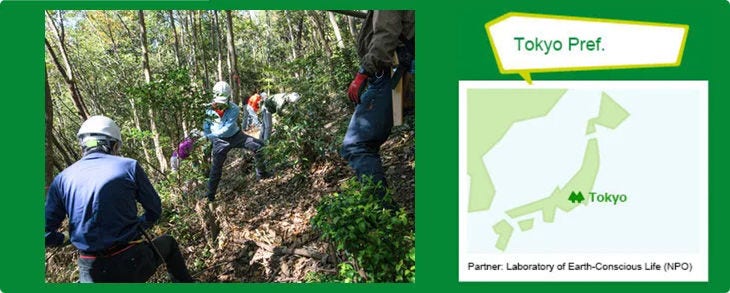
The satoyama (village forests) in the Kamikawa district of Hachioji City, Tokyo, were previously neglected. Although the community had once used them, they became overgrown with large-leaved broadleaf trees and were dimly lit even during the daytime.
Therefore, we initiated a project to transform the dark forests into bright woodlands by cutting down the broadleaf trees. In addition to restoring rich biodiversity, the woodchip-lined walking paths are also beneficial for forest therapy. Furthermore, the forest is a prime habitat for wild animals.
With the involvement of local residents, we will develop a vast area of approximately 100,000 square meters of satoyama.
Yasuga Irodori Forest, Where People and Animals Live in Harmony
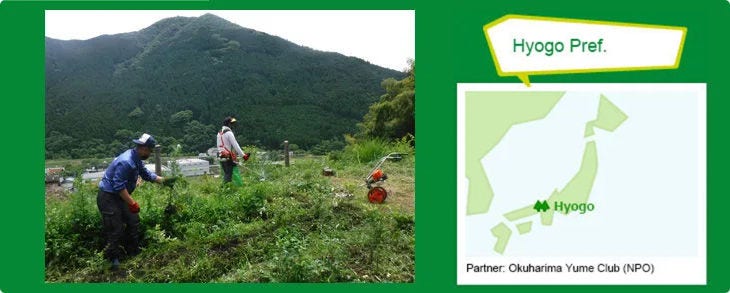
The forests of Okuharima, which are verdant at first glance, are actually in a state of deterioration due to a lack of care. If the situation continues unabated, the inherent role of satoyama (village forests) – which serve as a boundary between wildlife and humans – will be compromised. Wild animals will enter the village, threatening the existence of both parties. Therefore, we teamed up with the local community to thin 20,000 square meters of woodland to create a forest with plenty of sunlight. Furthermore, we planted low-growing flowering trees and shrubs such as hydrangeas and peonies, creating an environment where people can visit freely. In addition, we will repair waterways to improve drainage and install protective fencing to prevent wild animals from entering the area. Through these efforts, we will create the Yasuga Irodori Forest, where people and wildlife live in harmony with one another.
Creating a Forest Where People Can Experience Biodiversity Firsthand
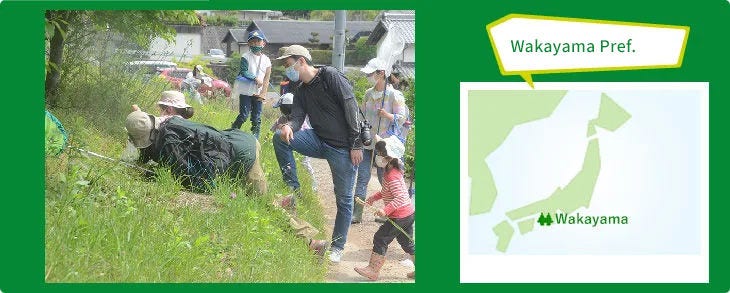
The area around the biotope in Wakayama Prefecture's Mokofudodani is home to rare creatures such as the Rana japonica (Japanese brown frog), the Hynobius nebulosus (Japanese clouded salamander), and even the Ceriagrion nipponicum (species of damselfly). Having successfully restored the function of rice fields as "natural dams" by preserving this vast 20,000-square-meter area, we aim to create a riparian environment that serves as a habitat to 30 species of dragonflies, eight species of amphibians, nine species of reptiles, and six species of birds. Kindergarteners through high school students, who represent the next generation, regularly visit the area, which is slated to be utilized as a leading research site in UNESCO's Heritage for the Future Project.
Restoring Kamakura's Forests by Thinning Bamboo Groves
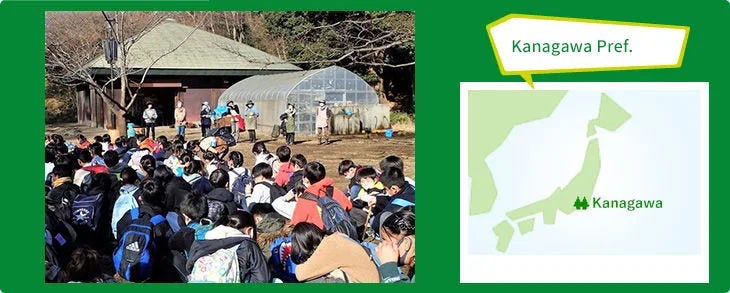
The hills of the ancient capital of Kamakura were once home to forests abundant with broadleaf trees and which absorbed vast amounts of CO2. However, due to poor management, the overgrown trees are at risk of falling during storms. Furthermore, the ever-increasing bamboo groves have led to a decline in the number of species that inhabit the forest.
With this in mind, we launched a project to prevent the encroachment of bamboo groves into evergreen forests. Although the problem is becoming more severe in Kamakura and other parts of Japan, there is still considerable room to increase awareness. Accordingly, we will continue to focus on awareness-raising activities in parallel with our efforts to cut down bamboo groves.
Learning, Protecting, and Connecting the Water of Lake Biwa
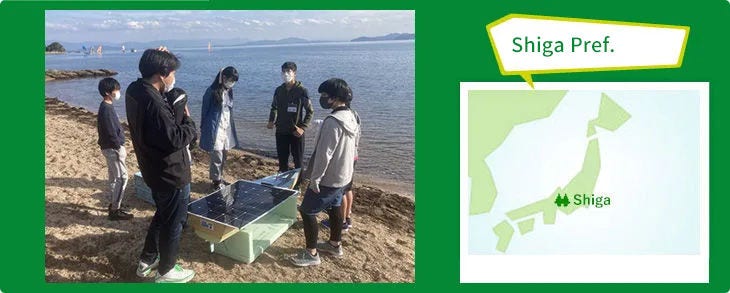
Lake Biwa, Japan's largest lake, generates 79 million kWh of solar energy annually – 60 times the amount of electricity consumed in Shiga Prefecture in one year. Due to the impact of global warming, however, the lake's water temperature has risen dramatically since 1990. As a result, in the winter of 2019, a phenomenon involving the circulation of lake water due to changes in water temperature – known as "deep breathing of Lake Biwa*" – ceased to occur. This initiative, involving young residents who will lead the next generation, seeks to raise awareness of this issue, explore ways to promote surface and deep water circulation, and propose the best circulation methods domestically and internationally. Ultimately, the project aims to lower the water surface temperature by 1℃, increase primary production of the epilimnion by 10%, and restore dissolved oxygen levels in the hypolimnion to 1ppm.
*A natural phenomenon in which highly oxygenated water near the lake's surface is replaced by water from the bottom of the lake.
Living with Geothermal Heat in Naruko Onsen
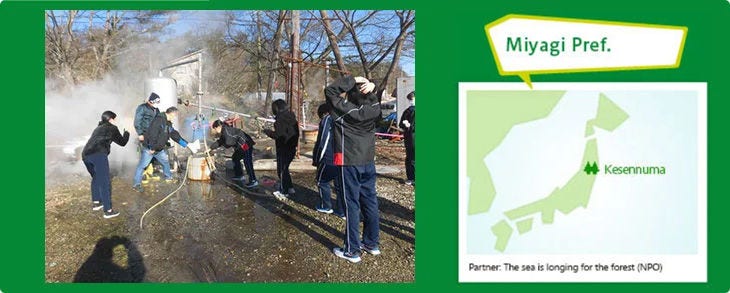
In Naruko Onsen, located in Miyagi Prefecture’s Osaki City, producing and consuming energy locally within the region is key to the use of geothermal and other types of renewable energy. To this end, we are working with universities and other research institutions to run classes and other activities at local schools, with the goal of deepening the understanding of children who hold the key to the future. One example is a learning program that positions heat from hot springs in Naruko Onsen and methane fermentation of organic waste as familiar energy sources. Through these activities, we aim to commercialize energy and ecotourism in the future to grow the number of visitors from outside the city and contribute to revitalizing the region.